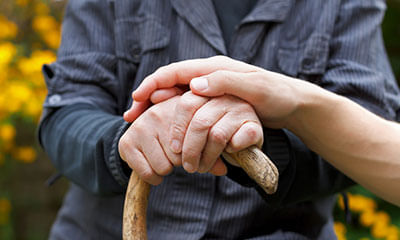Physiotherapy For Parkinson's Disease
Physiotherapy for "Parkinson's Disease":
Parkinsons Disease Physical Therapy, emphasizing gait retraining and motor control relearning, may help overcome postural instability. The individual can be trained to focus on foot positioning to provide a more stable base for posture and gait. Other helpful techniques include teaching the individual to turn around in a wide arc, rather that pivoting, in order to avoid the risk for loss of balance and postural stability, thus decreasing the risk for falls. Instructing the individual to consciously take longer steps with the help of verbal and visual (object) cues may help overcome the effects of freezing and festination. With the help of a neurologic music therapist, the physical therapist can provide parkinson's disease physical therapy exercises in a rhythmic fashion, that is, movements coupled with musical or drum-beating rhythm. Other specific exercises should include aerobic conditioning to improve endurance, strengthening of back extensor and abdominal muscles in order to promote a more upright posture, and stretching of trunk flexor muscles.
Impairments Resulting from Parkinson's Disease:
1.Motor
2.Gait
3.Movement initiation and execution
4.Bradykinesia
5.Tremor
6.Rigidity
7.Sensory/pain
8.Autonomic dysfunction:
9.Orthostatic hypotension
10.Constipation
11.Cognitive
12.Behavioral and affective
13.Depression
14.Anxiety
15.Psychotic features, such as hallucination
16.Gastrointestinal
17.Swallowing and nutrition
18.Constipation
19.Bladder dysfunction
20.Sexual dysfunction
Physiotherapy treatment for Parkinson's disease will include:
1.Relaxation techniques to decrease rigidity
2.Slow rhythmic rotational movements
3.Gentle range-of-motion and stretching exercises to prevent contractures, quadriceps and hip extensor
4.isometric exercises
5.Neck and trunk rotation exercises
6.Back extension exercises and pelvic tilt
7.Proper sitting and postural control (static and dynamic); emphasis whole body movements
8.Breathing exercises stressing both the inspiratory and expiratory phase
9.Functional mobility training, including bed mobility, transfer training, and learning to rise out of a chair by rocking; may require a chair lift
10.Stationary bicycle to help train reciprocal movements
11.Training in rhythmic pattern to music or with auditory cues such as clapping may help in alternating movements. Standing or balancing in parallel bars (static and dynamic) with weight shifting, ball throwing
Slowly progressive ambulation training (large steps using blocks to have patients lift legs, teaching proper heel-to-toe gait patterns, feet 12-15 inches apart, arm swing; use inverted walking stick, colored squares, or stripes as visual aids)
12.Use of assistive devices (may need a weighted walker)
13.Aerobic conditioning (swimming, walking, cycling)
14.Frequent rest periods
15.Family training and home exercise program



+1.svg)
